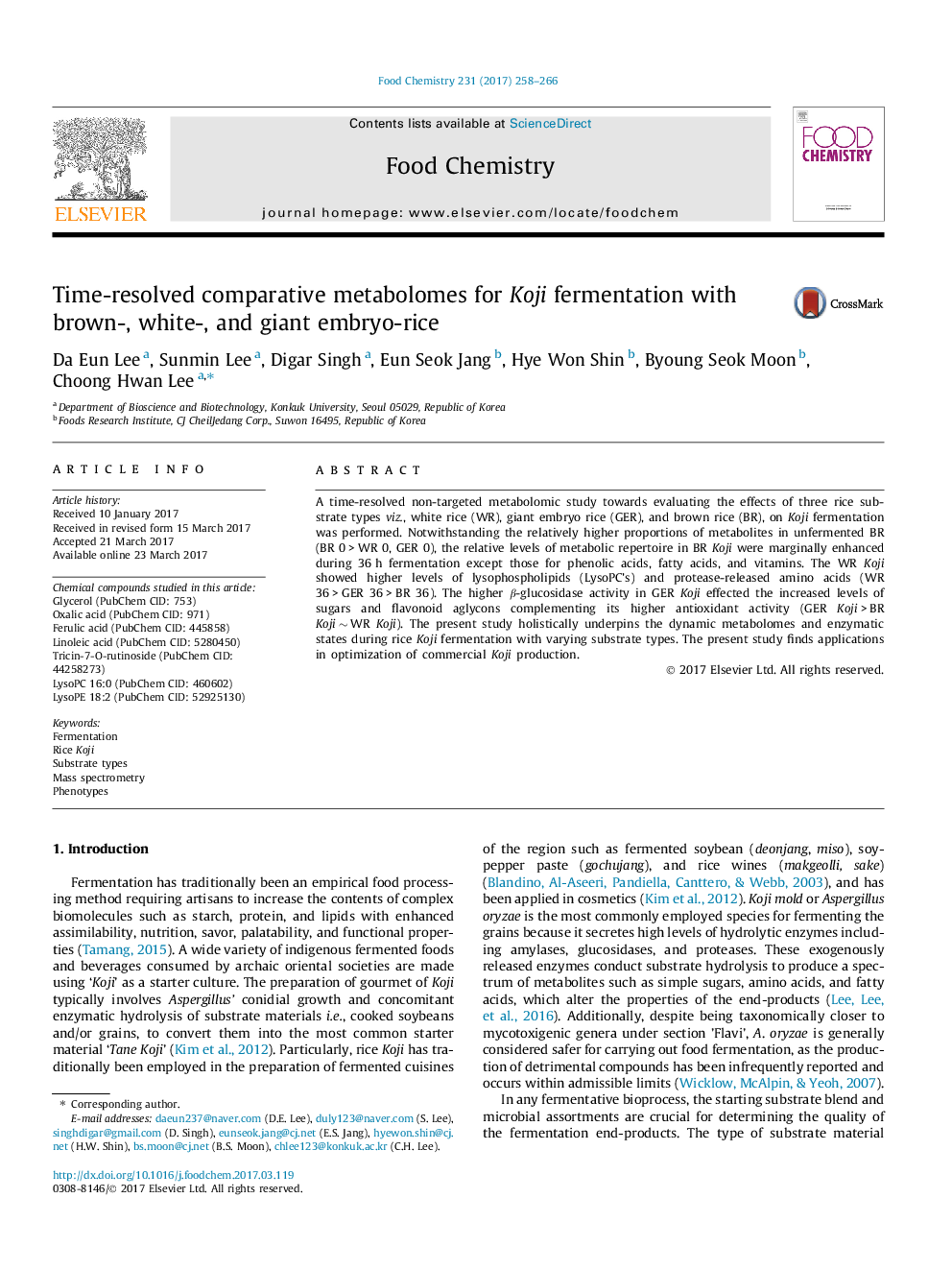| کد مقاله | کد نشریه | سال انتشار | مقاله انگلیسی | نسخه تمام متن |
|---|---|---|---|---|
| 5132890 | 1492061 | 2017 | 9 صفحه PDF | دانلود رایگان |

- Various rice substrates alter metabolic and enzymatic states in Koji fermentation.
- Brown rice (BR) Koji with bran exhibit slow-fermentative and metabolic changes.
- White rice (WR) Koji shows high lysophospholipids and protease released amino acid.
- Flavonoid & sugar rich giant embryo rice (GER) Koji shows high antioxidant levels.
- GER and WR substrates were found optimal towards rice Koji preparation.
A time-resolved non-targeted metabolomic study towards evaluating the effects of three rice substrate types viz., white rice (WR), giant embryo rice (GER), and brown rice (BR), on Koji fermentation was performed. Notwithstanding the relatively higher proportions of metabolites in unfermented BR (BR 0 > WR 0, GER 0), the relative levels of metabolic repertoire in BR Koji were marginally enhanced during 36 h fermentation except those for phenolic acids, fatty acids, and vitamins. The WR Koji showed higher levels of lysophospholipids (LysoPC's) and protease-released amino acids (WR 36 > GER 36 > BR 36). The higher β-glucosidase activity in GER Koji effected the increased levels of sugars and flavonoid aglycons complementing its higher antioxidant activity (GER Koji > BR Koji â¼Â WR Koji). The present study holistically underpins the dynamic metabolomes and enzymatic states during rice Koji fermentation with varying substrate types. The present study finds applications in optimization of commercial Koji production.
Journal: Food Chemistry - Volume 231, 15 September 2017, Pages 258-266